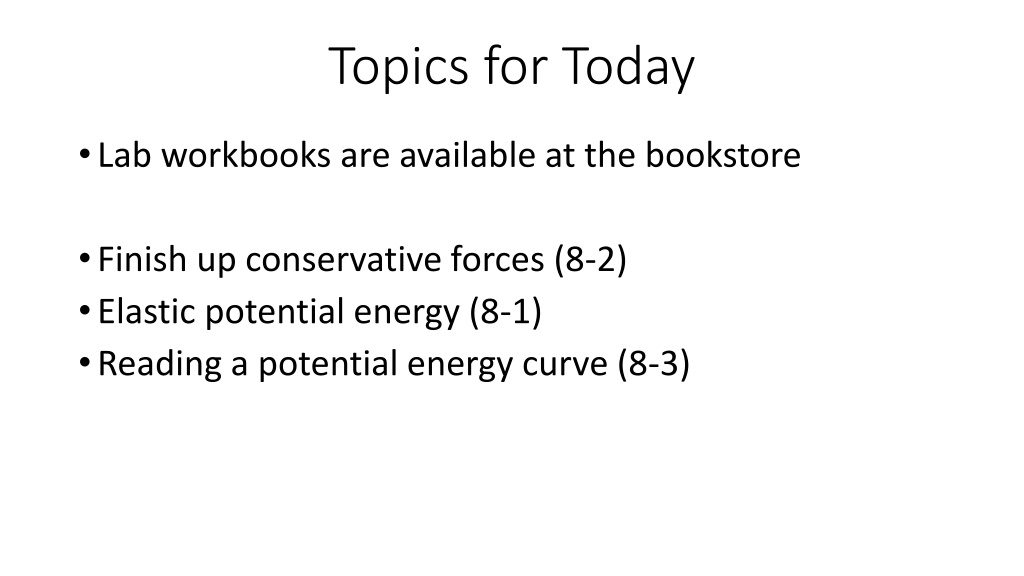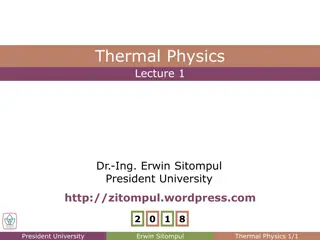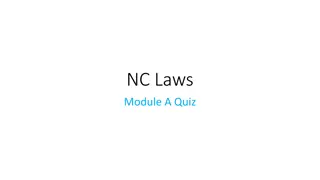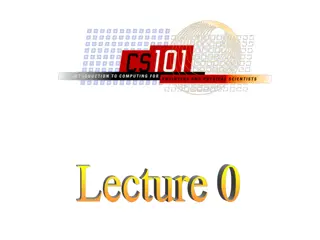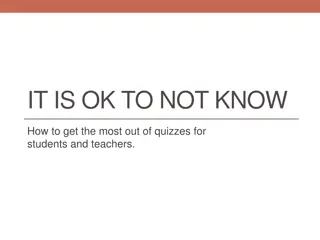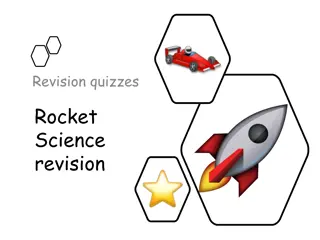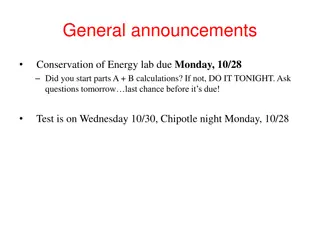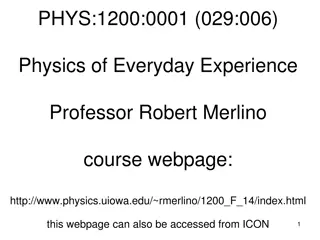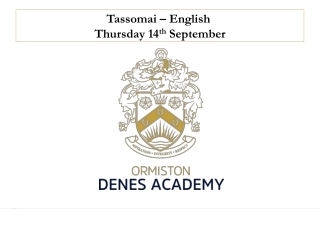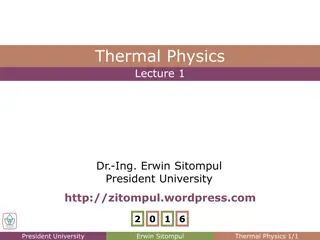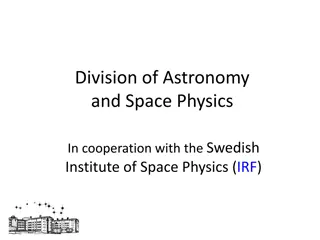Physics Lab Workbook Topics and Quizzes
Lab workbooks available, covering conservative forces, elastic potential energy, and reading potential energy curves. Quizzes on conservative forces and spring force demonstrations with darts. Understanding potential energy curves and turning points in mechanical energy.
Download Presentation

Please find below an Image/Link to download the presentation.
The content on the website is provided AS IS for your information and personal use only. It may not be sold, licensed, or shared on other websites without obtaining consent from the author. Download presentation by click this link. If you encounter any issues during the download, it is possible that the publisher has removed the file from their server.
E N D
Presentation Transcript
Topics for Today Lab workbooks are available at the bookstore Finish up conservative forces (8-2) Elastic potential energy (8-1) Reading a potential energy curve (8-3)
Conservative Forces Quiz Two identical balls roll down two different tracks with the same starting and ending heights. The first track is straight. The second track curves up and down. How does the speed of the ball at the end of the first track compare with the speed of the ball at the end of the second track? 1. faster 2. same 3. slower Ignore energy losses due to friction or drag.
Conservative Forces Quiz is the force conservative? 1. Yes 2. No
Elastic Potential Energy ??? ?? Recall that: ? = ?? For a spring, we define x so x = 0 and U = 0 at the relaxed position of the spring. The force is F = -kx. Inserting these into the equation above: ? ? ? ?? =1 2??2 ? ? = ?? ?? = ? 0 0 1 2??2 Elastic potential energy ?(?) = Spring stores potential energy whether stretched or compressed.
Spring Force Demo 1M40.64 - Spring Gun and Darts use 7 gm and 28 gm darts Quiz Putting a dart into the dart gun compresses a spring in the gun by a certain distance. When the spring is released it does work on the dart. Now use a second dart with one quarter the mass. How high will the second dart go? 1. Same as the first ball 2. Twice as high as the first ball 3. Half as high as the first ball 4. Four times as high as the first ball
Potential Energy Curves ??? ?? Recall that: ? = ?? Let s take the derivative of both sides: ? ??? = ? ?? ??? ? ? = ??(?) ?? Check using elastic potential energy: ??(?) ?? = 1 ? ???2 = ?? 1 2??2 ? ? = ? ? = 2?
Potential Energy Curves For spring: ??(?) ?? = ?? 1 2??2 ? ? = ? ? =
Turning Points Mechanical energy: ? = ? ? + ?(?) Solve for K: ? ? = ? ? ? =1 What happens at points where K(x) = 0? Have v = 0, so particle cannot move past. These are turning points the particle slows down to v = 0 and then turns around. By plotting the total mechanical energy on a potential energy curve, we can immediately find the turning points. 2??2
Turning Points If a particle starts at large x, moving left with E = 5 J, how far can it go? Answer 1-5 for x1 to x5. Where will the particle be going the fastest? Answer 1-5 for x1 to x5.
Equilibrium Points Recall: ? ? = ??(?) Places where dU/dx = 0 have force = 0. These places are called equilibrium points . There are three kinds of equilibria: Stable if the object moves slightly to either side, the forces push the object back to the equilibrium point. Unstable forces on either side push the object away from the equilibrium point. Neutral there are no forces on either side. ??
Equilibrium Points Quiz responses are: 1=Stable, 2=Unstable, 3=Neutral What sort of equilibrium will there be at x4? At x3?
